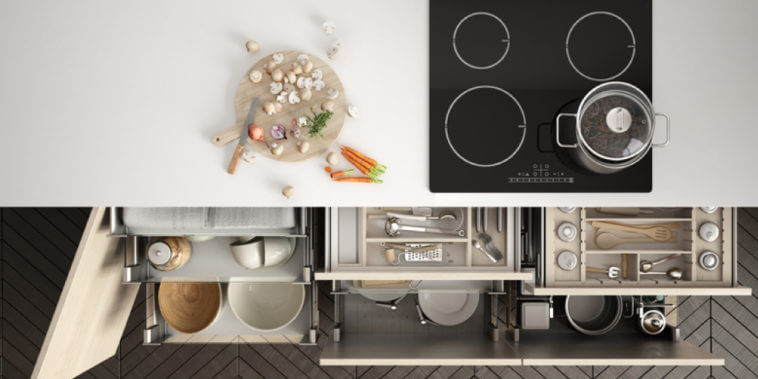Organizing A Kitchen
A well-organized kitchen can make all the difference in your cooking experience. No more wasted time searching for that elusive spatula, no more cluttered counters – just a smooth, stress-free environment where everything is in its right place. If you’ve ever dreamt of a clean, clear kitchen with sleeker shelves and less clutter, this comprehensive guide is for you. Let’s jump right into the kitchen organization hacks that will transform your culinary space.
The Art of Decluttering
Decluttering is the first crucial step in any organizational project. It might seem daunting, but with the right approach, it can be a liberating and rewarding process.
Start by emptying out all your kitchen drawers, cupboards, and shelves. Group similar items together on a large surface like your dining table or counter. Evaluate each item, asking yourself: When was the last time I used this? Is it necessary? Do I have duplicates? If an item doesn't pass these questions, it might be time to donate, recycle, or discard it.
Understand Your Kitchen’s Flow
Importance of a Well-Organized Kitchen
Before we dive into the hacks, let's first understand why it’s critical to have an organized kitchen. An efficient kitchen saves time, reduces stress, promotes healthier eating, and makes cooking enjoyable. It’s a space where functionality, aesthetics, and practicality should meet.
Assessing Your Kitchen’s Flow
A key factor in organizing your kitchen is understanding its flow. The layout of your kitchen plays a huge role in how efficiently you can move around while cooking or cleaning. A well-thought-out kitchen layout will put everything you need within arm's reach.
The Work Triangle
Consider the concept of the kitchen work triangle, a principle that focuses on the positioning of the sink, stove, and refrigerator – the three most used areas in the kitchen. They should be arranged in a way that allows for easy movement between them, forming an imaginary triangle.
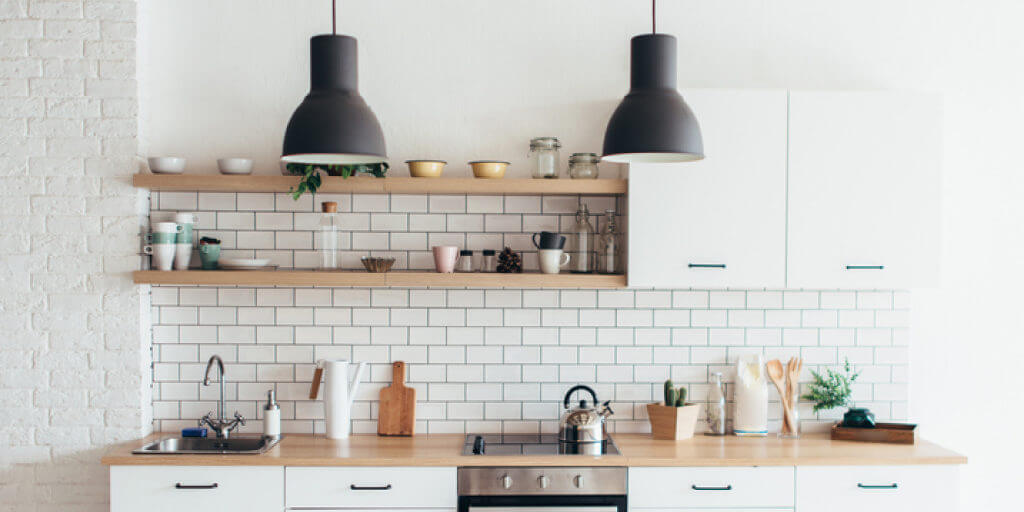
Kitchen Zones: The Core of Organizing
Identify Your Kitchen Zones
To effectively organize your kitchen, start by identifying different kitchen zones. These zones may include the baking area, cooking area, storage area, cleaning area, and serving area.
How to Organize Each Zone
Each zone should contain everything you need to carry out the task related to that zone. For instance, the baking zone might house mixing bowls, measuring cups, and baking ingredients. When everything required for a task is within the same area, it reduces unnecessary movement, saving you time and energy.
Simple Hacks to De-clutter and Organize
Use Vertical Space
Maximize the use of vertical space, especially if you have a small kitchen. Install open shelves or hanging pot racks to utilize the space above your counters. Hooks on the insides of cabinet doors can provide additional storage for utensils and pans.
Employ Drawer Organizers
Drawer organizers are essential for maintaining order inside your drawers. They're perfect for storing cutlery, utensils, and other small kitchen gadgets neatly.
Invest in Clear Storage Containers
Invest in clear storage containers for pantry items. They not only make your pantry look uniform and neat, but they also allow you to quickly see what’s inside and when you're running low on an item.
Streamline Your Counters
Clear Your Counters
Counters are prime real estate in your kitchen, so keep them clear. Besides the essentials like a coffee maker or toaster, aim to keep other items off the counters.
Use Appliance Garages
Appliance garages are a handy way to store small appliances. They keep appliances within easy reach but off the counters, freeing up valuable workspace.
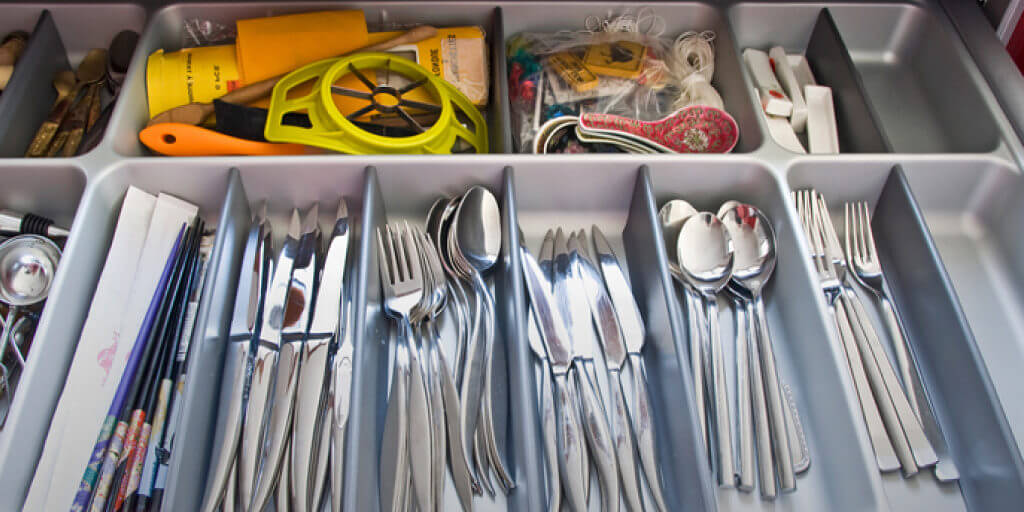
Sustainable Ways to Reduce Kitchen Clutter
Regular De-cluttering Sessions
Regularly go through your kitchen items and get rid of anything you no longer use. Remember, the less you have, the less you need to organize.
Utilize Multi-purpose Tools
Invest in multi-purpose tools to reduce the number of kitchen gadgets you need. For instance, a blender can often double up as a food processor, thereby saving you space.
Maintaining an Organized Kitchen: The Secret of Habits
The Power of Habits
Having a well-organized kitchen is one thing, but maintaining it requires forming good habits. One essential habit is cleaning as you go, which prevents a pile-up of dirty dishes and helps you keep your kitchen tidy.
Develop a Routine
Develop a daily, weekly, and monthly kitchen organization routine. This may include daily dishwashing, weekly fridge cleanouts, and monthly pantry audits. Consistency is key.
The Role of Labels in Your Kitchen
Why Labeling Matters
Labeling is an effective tool in organizing a kitchen. Labels can be used on pantry containers, spice jars, or in the freezer. Not only do they make it easier to find what you need, but they also contribute to a clean and uniform look.
Creative Labeling Ideas
You don't need to stick to plain labels; you can use chalkboard paint, color-coded labels, or even picture labels for younger family members.
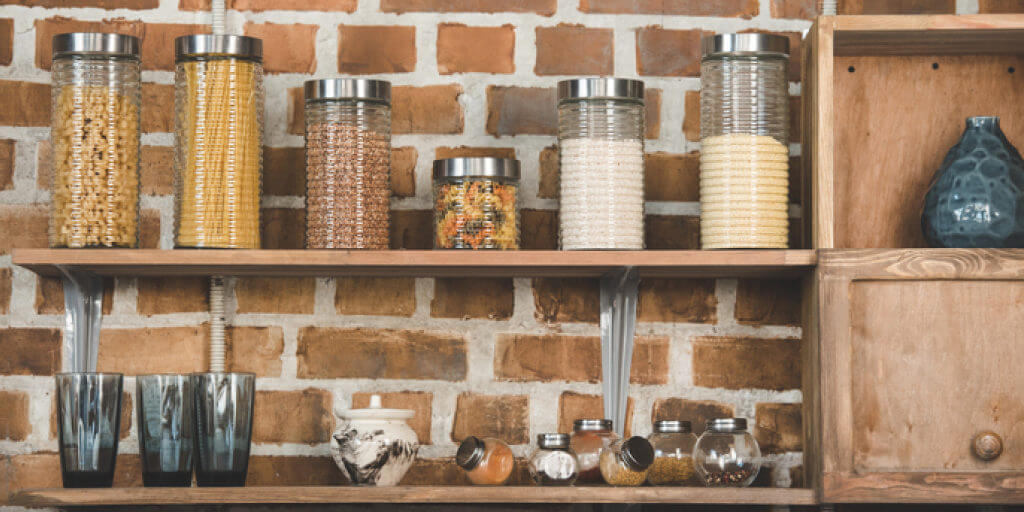
Embracing Minimalism in the Kitchen
The Benefits of Minimalism
A minimalist approach can also help in keeping your kitchen organized. This doesn't mean your kitchen needs to look sterile or devoid of personality, but rather it should only contain items that are necessary and bring you joy.
How to Adopt a Minimalist Approach
Start by decluttering and then adopt the one-in-one-out rule to keep items in check. When you bring a new item into the kitchen, another must leave.
Smart Storage Solutions for Small Kitchens: Maximizing Space with Creative Strategies
Utilize Hidden Spaces
Small kitchens require ingenious storage solutions to make the most of every inch. Discover and optimize hidden spaces that often go unused. Consider the following ideas:
- Side of Cabinets: Attach hooks, magnetic strips, or small shelves to the sides of your cabinets to hang utensils, measuring cups, or spices.
- Space under the Sink: Install adjustable shelves, stackable bins, or hanging racks to maximize storage beneath the sink. Store cleaning supplies, dish soap, or extra sponges in this often overlooked area.
- Inside Cabinet Doors: Affix hooks or stick-on organizers to the inside of cabinet doors for storing pot lids, cutting boards, or small tools.
Portable Kitchen Islands
A portable kitchen island is a versatile addition to a small kitchen. Not only does it provide extra storage and workspace, but it can also be moved out of the way when not in use. Consider the following aspects:
- Rolling Cart: Choose a rolling cart with shelves, drawers, or hooks to store frequently used items such as cooking utensils, cutting boards, or spices.
- Foldable Design: Opt for a foldable kitchen island that can be expanded when needed and neatly folded away when space is limited.
- Multi-functional Features: Look for portable islands with additional features like drop-leaf countertops, built-in cutting boards, or wine racks to maximize functionality.
Vertical Storage Solutions
When horizontal space is limited, vertical storage comes to the rescue. Utilize your kitchen's vertical space effectively with these ideas:
- Wall-mounted Shelves: Install open shelves on empty walls to store dishes, cookbooks, or decorative items. Opt for adjustable shelves to accommodate various heights.
- Pegboards: Mount a pegboard on the wall and use hooks or pegs to hang pots, pans, and cooking utensils. This flexible solution allows for easy rearrangement as needed.
- Over-the-Door Organizers: Utilize the back of pantry or cabinet doors with over-the-door organizers. They are perfect for storing spices, wraps, or cleaning supplies without taking up valuable shelf space.
Magnetic Strips and Hooks
Magnetic strips and hooks offer simple yet effective storage solutions that utilize vertical surfaces. Consider the following options:
- Magnetic Knife Strip: Mount a magnetic strip on the wall to securely hold your knives, freeing up drawer space and keeping them easily accessible.
- Magnetic Spice Jars: Use magnetic spice jars that can be attached to a metal surface, such as the side of your fridge or a metal backsplash.
- Hooks and Rails: Install hooks or rails on walls or the undersides of shelves to hang mugs, pots, pans, or cooking utensils.
Stackable and Collapsible Containers
Space-saving containers are essential for small kitchens. Choose stackable and collapsible options to make the most of your storage areas:
- Nesting Mixing Bowls: Select mixing bowls that can be nested together to save space in cabinets or drawers.
- Collapsible Food Storage Containers: Opt for collapsible containers that can be flattened when not in use, allowing for easy storage.
- Modular Storage Systems: Invest in modular storage systems with stackable bins or interlocking components to customize your storage space according to your needs.
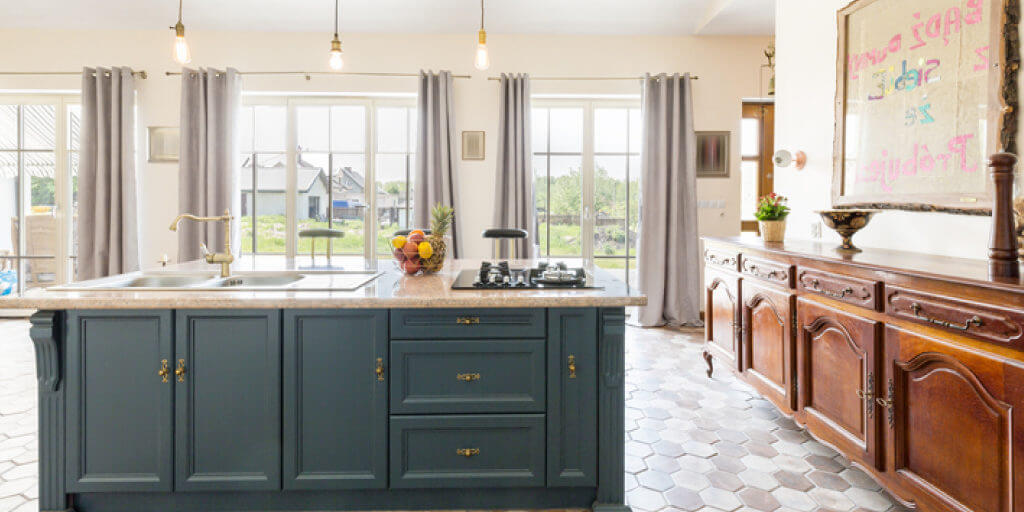
Accessibility and Safety: Essential Elements for Efficient and Secure Kitchen Organization
Fostering Accessibility in Your Kitchen: A Detailed Checklist
Accessibility Matters
During your kitchen organization journey, prioritize accessibility. This principle ensures that you can easily locate and reach items when needed, increasing efficiency and reducing potential accidents. Here are a few ways to implement it:
- Strategize Based on Frequency of Use: Arrange kitchen items according to how frequently you use them. Everyday items should be in easy-to-reach locations, while those used less frequently can be stored in more remote areas.
- Stow Everyday Items at Eye Level: Place regularly used items, such as your favorite pots and pans or daily dinnerware, at eye level. This makes it easy for you to find and grab them without bending or reaching them.
- Elevate Rarely Used Items: Store less frequently used items, such as your special occasion china or bulky kitchen appliances you only pull out once in a while, on higher shelves or at the back of your cabinets.
- Optimize Corner Cabinets: Make the most of corner cabinets with lazy susans. They provide easy access to items that would otherwise be hard to reach.
Prioritizing Safety in Kitchen Organization: An In-depth Approach
Safety is Key
When it comes to kitchen organization, safety should never be compromised. By organizing with safety in mind, you can prevent accidents and ensure that your kitchen remains a secure space for all family members. Here's how you can integrate safety into your kitchen organization:
- Secure Knife Storage: Store your knives safely to prevent accidental injuries. A dedicated wooden block or magnetic strip works well, keeping knives securely in place and out of children’s reach.
- Mindful Heavy Item Storage: Always store heavy items, such as large pots and pans, at waist level. This prevents the risk of strain or injury when lifting them.
- Child-Proof Your Kitchen: Ensure that potentially dangerous items, such as cleaning chemicals or sharp tools, are out of children's reach. Consider locks for lower cabinets and drawers that store these items.
- Safe Appliance Placement: Place appliances away from the edge of counters to prevent them from falling off or being pulled down accidentally.
Frequently Asked Questions
1. Why should I prioritize kitchen organization?
Kitchen organization is pivotal for several reasons. An organized kitchen not only streamlines your cooking process but also saves time and reduces stress. It contributes to a healthier lifestyle by promoting better meal planning and preparation. Furthermore, an organized kitchen space enhances the overall aesthetics and functionality of your home.
2. How can I effectively begin decluttering my kitchen?
Starting the decluttering process can be overwhelming, but taking it step by step is key. Begin by emptying all drawers, cupboards, and shelves. Group similar items together on a large surface. As you assess each item, consider its relevance: When was it last used? Is it truly necessary? Do I have duplicates? This evaluation will help you decide whether to donate, recycle, or discard items that no longer serve a purpose.
3. Could you explain the concept of the kitchen work triangle in more detail?
Certainly. The kitchen work triangle is a design principle that optimizes the efficiency of a kitchen layout. It involves arranging the three most frequently used areas – the sink, stove, and refrigerator – in a triangular formation. This layout minimizes unnecessary movement and creates a smooth workflow, enabling easy transitions between tasks during cooking and meal preparation.
4. How do I effectively identify and organize kitchen zones?
Identifying kitchen zones is about categorizing your kitchen space based on specific tasks. These tasks could include cooking, baking, cleaning, storage, and more. Once you've identified these zones, organize them by placing related items within each zone. For instance, the cooking zone might house pots, pans, and utensils, while the baking zone contains mixing bowls, measuring cups, and baking ingredients.
5. What are some advanced strategies for maximizing space in a small kitchen?
In small kitchens, strategic planning is crucial. Consider utilizing the often overlooked spaces, such as the sides of cabinets, under the sink, and inside cabinet doors. Portable kitchen islands offer extra storage and can be moved when not in use. Vertical storage solutions like wall-mounted shelves and pegboards effectively utilize wall space, and magnetic strips and hooks offer versatile storage options for items like knives and spices.
6. How can I ensure both accessibility and safety in my organized kitchen?
Fostering accessibility involves strategically placing items based on their frequency of use. Keep everyday items at eye level and less frequently used items higher up. Utilize tools like lazy susans to make corner cabinets more accessible. For safety, store knives securely, especially if you have children, and keep heavy items at waist level to prevent strain. Child-proof lower cabinets and ensure appliances are safely positioned.
7. What are some practical ways to maintain an organized kitchen over time?
Consistency is crucial for maintaining an organized kitchen. Develop daily habits like cleaning as you go, ensuring dishes and surfaces remain clutter-free. Implement a weekly routine for tasks such as fridge cleanouts and wiping down surfaces. A monthly pantry audit helps you keep track of pantry items and prevent clutter from accumulating.
8. How can labeling contribute to efficient kitchen organization?
Labeling is a powerful tool for staying organized. It helps you quickly locate items and maintain a tidy appearance. Use labels on pantry containers, spice jars, and other storage solutions. Consider creative labeling methods such as color-coded labels, chalkboard paint, or even picture labels for added functionality and visual appeal.
9. Could you provide more insight into adopting a minimalist approach in the kitchen?
A minimalist approach focuses on keeping only items that are essential and bring joy. Start by decluttering and evaluating each item's utility. Embrace the one-in-one-out rule: when a new item enters your kitchen, let go of something you no longer need. This approach not only reduces clutter but also enhances the functionality and visual appeal of your kitchen space.
Conclusion
The task of organizing a kitchen might seem daunting at first glance, but it certainly doesn't need to be. The first step towards an efficiently organized kitchen begins with a comprehensive understanding of the natural flow of your kitchen space. This involves recognizing how you move and interact with the various components in your kitchen as you prepare meals or clean up.
Next, a great strategy is to compartmentalize your kitchen into different zones. These zones could be based on tasks such as cooking, cleaning, baking, and storage. By doing so, you create a structure that ensures every item in your kitchen has a designated place close to where it's most frequently used. This not only enhances order but also improves efficiency.


